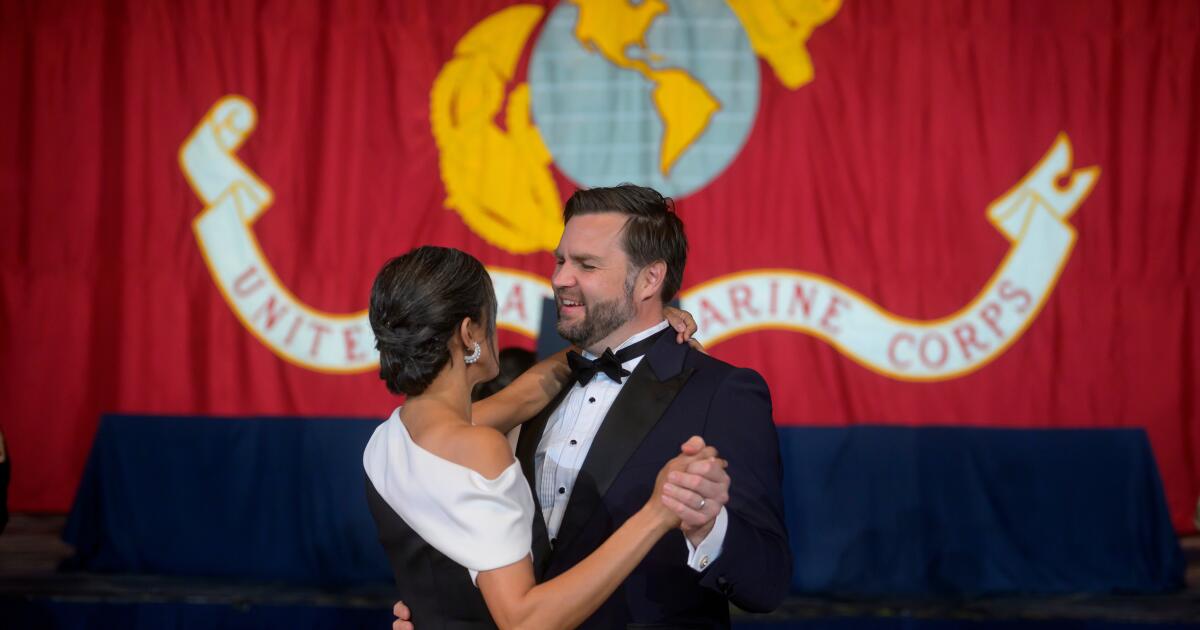Vance’s pugnacious performance breaks vice presidential norms
JD Vance, it seems, is everywhere.
Berating Volodymyr Zelensky in the Oval Office. Eulogizing Charlie Kirk. Babysitting the Middle East peace accord. Profanely defending the aquatic obliteration of (possible) drug smugglers.
He’s loud, he’s obnoxious and, in a very short time, he’s broken unprecedented ground with his smash-face, turn-it-to-11 approach to the vice presidency. Unlike most White House understudies, who effectively disappear like a protected witness, Vance has become the highest-profile, most pugnacious politician in America who is not named Donald J. Trump.
It’s quite the contrast with his predecessor.
Kamala Harris made her own kind of history, as the first woman, first Black person and first Asian American to serve as vice president. As such, she entered office bearing great — and vastly unrealistic — expectations about her prominence and the public role she would play in the Biden administration. When Harris acted the way that vice presidents normally do — subservient, self-effacing, careful never to poach the spotlight from the chief executive — it was seen as a failing.
By the end of her first year in office, “whatever happened to Kamala Harris?” had become a political buzz phrase.
No one’s asking that about JD Vance.
Why is that? Because that’s how President Trump wants it.
“Rule No.1 about the vice presidency is that vice presidents are only as active as their presidents want them to be,” said Jody Baumgartner, an East Carolina University expert on the office. “They themselves are irrelevant.”
Consider Trump’s first vice president, Mike Pence, who had the presence and pizzazz of day-old mashed potatoes.
“He was not a very powerful vice president, but that’s because Donald Trump didn’t want him to be,” said Christopher Devine, a University of Dayton professor who’s published four books on the vice presidency. “He wanted him to have very little influence and to be more of a background figure, to kind of reassure quietly the conservatives of the party that Trump was on the right track. With JD Vance, I think he wants him to be a very active, visible figure.”
In fact, Trump seems to be grooming Vance as a successor in a way that Joe Biden never did with Harris. The 46th president practically had to be bludgeoned into standing aside after the Democratic freakout over his wretched, career-ending debate performance. (Things might be different with Vance if Trump could override the Constitution and fulfill his fantasy of seeking a third term in the White House.)
There were other circumstances that kept Harris under wraps, particularly in the early part of Biden’s presidency.
One was the COVID-19 lockdown. “It meant she wasn’t traveling. She wasn’t doing public events,” said Joel K. Goldstein, another author and expert on the vice presidency. “A lot of stuff was being done virtually and so that tended to be constraining.”
The Democrats’ narrow control of the Senate also required Harris to stick close to Washington so she could cast a number of tie-breaking votes. (Under the Constitution, the vice president provides the deciding vote when the Senate is equally divided. Harris set a record in the third year of her vice presidency for casting the most tie-breakers in history.)
The personality of their bosses also explains why Harris and Vance approached the vice presidency in different ways.
Biden had spent nearly half a century in Washington, as a senator and vice president under Barack Obama. He was, foremost, a creature of the legislative process and saw Harris, who’d served nearly two decades in elected office, as a (junior) partner in governing.
Trump came to politics through celebrity. He is, foremost, a pitchman and promoter. He saw Vance as a way to turn up the volume.
Ohio’s senator had served barely 18 months in his one and only political position when Trump chose Vance as his running mate. He’d “really made his mark as a media and cultural figure,” Devine noted, with Vance’s memoir, “Hillbilly Elegy,” regarded as a kind of Rosetta Stone for the anger and resentment that fueled the MAGA movement.
Trump “wanted someone who was going to be aggressive in advancing the MAGA narrative,” Devine said, “being very present in media, including in some newer media spaces, on podcasts, social media. Vance was someone who could hammer home Trump’s message every day.”
The contrast continued once Harris and Vance took office.
Biden handed his vice president a portfolio of tough and weighty issues, among them addressing the root causes of illegal migration from Central America. (They were “impossible, s— jobs,” in the blunt assessment that Harris’ husband, Doug Emhoff, offered in her recent campaign memoir.)
Trump has treated Vance as a sort of heat-seeking rhetorical missile, turning him loose against his critics and acting as though the presidential campaign never ended.
Vance seems gladly submissive. Harris, who was her own boss for nearly two decades, had a hard time adjusting as Biden’s No. 2.
“Vance is very effective at playing the role of backup singer who gets to have a solo from time to time,” said Jamal Simmons, who spent a year as Harris’ vice presidential communications chief. “I don’t think Kamala Harris was ever as comfortable in the role as Vance has proven himself to be.”
Will Vance’s pugilistic approach pay off in 2028? It’s way too soon to say. Turning the conventions of the vice presidency to a shambles, the way Trump did with the presidency, has delighted many in the Republican base. But polls show Vance, like Trump, is deeply unpopular with a great number of voters.
As for Harris, all she can do is look on from her exile in Brentwood, pondering what might have been.
